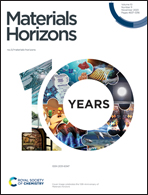Origin and characterization of the oxygen loss phenomenon in the layered oxide cathodes of Li-ion batteries†
Abstract
Li-ion batteries have been widely applied in the field of energy storage due to their high energy density and environment friendliness. Owing to their high capacity of ∼200 mA h g−1 and high cutoff voltage of ∼4.6 V vs. Li+/Li, layered lithium transition metal oxides (LLMOs) stand out among the numerous cathode materials. However, the oxygen loss of LLMO cathodes during cycling hampers the further development LLMO cathode-based Li-ion batteries by inducing a dramatic decay of electrochemical performance and safety issues. In this regard, the oxygen loss phenomenon of LLMO cathodes has attracted attention, and extensive efforts have been devoted to investigating the origins of oxygen loss in LLMO cathodes by various characterization methods. In this review, a comprehensive overview of the main causes of oxygen loss is presented, including the state of charge, side reactions with electrolytes, and the thermal instability of LLMO cathodes. The characterization methods used in the scope are introduced and summarized based on their functional principles. It is hoped that the review can inspire a deeper consideration of the utilization of characterization techniques in detecting the oxygen loss of LLMO cathodes, paving a new pathway for developing advanced LLMO cathodes with better cycling stability and practical capabilities.

- This article is part of the themed collection: Recent Review Articles


 Please wait while we load your content...
Please wait while we load your content...